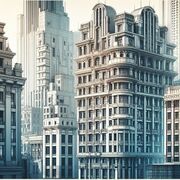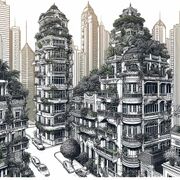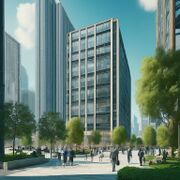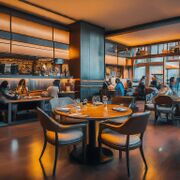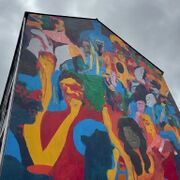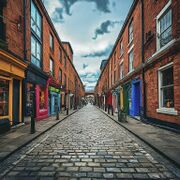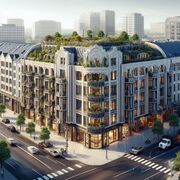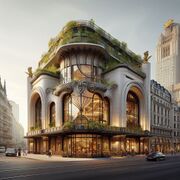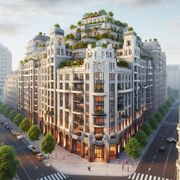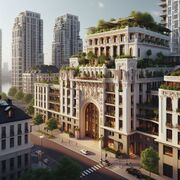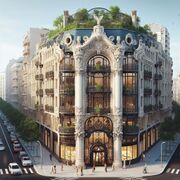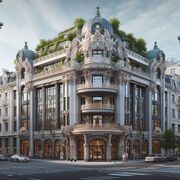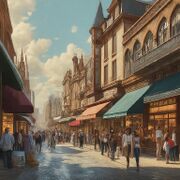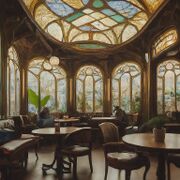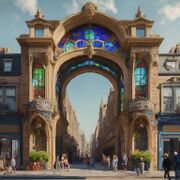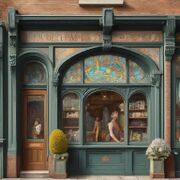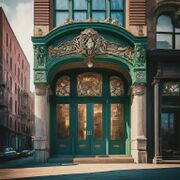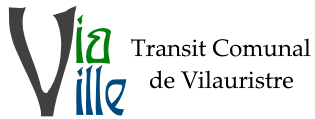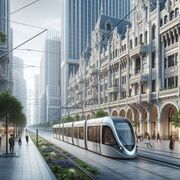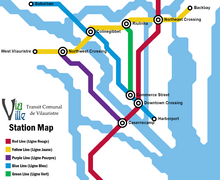Vilauristre
Script error: The module returned a nil value. It is supposed to return an export table.
Vilauristre | |
|---|---|
Capital City of the Nation of Burgundie and the Principality of the Ile Burgundie | |
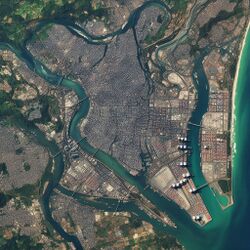 The view of Vilauristre from space | |
| Etymology: Hurricane city | |
| Motto(s): Nos simul tempestas" We weather the storm together | |
| Nation | |
| Constituent Country | |
| Population | |
| • Total | 9,874,202 |
Vilauristre is the capital city of the Nation of Burgundie and the Principality of the Ile Burgundie. It has a population of 8.5 million people and has been an important trading hub since its settlement in the 4th or 5th century BC. The city has served as the political and administrative capital of Burgundie since 1462. Urban renewal is pervasive and greenovation has taken the development of the city by storm. While green space is fairly accessible to most residents the high density of the city means that most buildings are multi-family, mid or high-rise, with single-family homes only accounting for 2.1% of the total residential market. Public transit is the primary mode of inner city transport in Vilauristre. It is called ViaVille and consists of a network of light rail, buses, and ferries. Since 2019 all public transit in the city is automated. Safety officers are present on higher risk routes but have yet to encounter any incidents of accidental death. Vilauristre has 9 boroughs: Harborside, The Quays, Commerce_Street|Commerce Street, Devil's Den, Andeliou Medical Area, Riulinha, Aldelmar Park, South Vilauristre, Casernecamp, Colinegibbet. It also hosts several festivals throughout the year, including the Vilauristre Fringe Festival, Summer in the City Festival, Vilauristre Art and Film Lay Synod, Dockfest, Rue de Oulechard Jazz Festival, and Céilí and Sail Éille.
History
Historical affiliations:
- Kingdom of the Impari Impaxi 350 BC–132 AD
- The Bergenddium 132–636
- Alvaria 636–937
- Archbishopric of Rabascall-Bergendia 937–1175
- Vilauristre Conference 1175–1597
- Kingdom of Magnia-Bourgondi 1597–1725
- Duchy of Bourgondi 1725–1793
- Duchy of Bourgondi-Estia 1793–1812
- Burgundie 1812–present
First settled in the 4th or 5th century BC by Impari Impaxi peoples, the city was formally incorporated in 1247 and then elevated to city status in 1478. It has served as an important trading hub in southeastern Levantine circuit since its settlement and has been the capital of 4 civilizations or nations. Following its modernization in the late-1800s, it was one of the few metropolitan areas with a population already over one million residents. After the Second Great War, the population boomed again and has been growing steadily ever since.
Vilauristre has served as the political and administrative capital of the Burgundie since 1462, more or less. There were a few instances where the government evacuated the city to avoid riots, mobs or military incursion, but for the most part, the legacy of government has always rested in the city. During the period of the Trade Company Empires, Vilauristre was catapulted into the world of global politics. It became only regionally important following the independence of Burgundie at the cost of its overseas empire in Audonia, Alshar, and Vallos. Wallowing in relative obscurity for the next century Vilauristre played second fiddle to Port Diteaux, which took on a global role during the Trade Route Empire. As the 20th century dawned and the country embarked on the era known locally as the Pax Burgundia, Vilauristre clawed its way back into the spotlight. Particularly in the aftermath of the Second Great War, Vilauristre, emerging entirely unscathed, steadily grew its influence as a global intermediary and negotiation center.
Today the city is vibrant and diverse with a massive population. Urban renewal is pervasive and greenovation has taken the development of the city by storm. While green space is fairly accessible to most residents the high density of the city means that most buildings are multi-family, mid or high-rise, with single-family homes only accounting for 2.1% of the total residential market. Also due to the population density, most mid- and high-rise buildings are multi-use. The first one or two stories being commercial with a residential tower above is a common layout in the city. Problems with drug abuse, homelessness, and poverty are prevalent in some of the lower-class neighborhoods, but a very strong and well funded Department of Public Health and Social Resiliency keep the numbers of residents suffering those indignities at proportionally low rates.
Vilauristre Defensive Positions
The Vilauristre Defensive Positions were a late 19th century scheme of earthwork fortifications in the south-east of Burgundie, designed to protect Vilauristre from foreign invasion landing on the south coast. The positions were a carefully surveyed contingency plan for a line of entrenchments, which could be quickly excavated in a time of emergency. The line to be followed by these entrenchments was supported by thirteen permanent small polygonal forts or redoubts called Vilauristre Mobilization Centers, which were equipped with all the stores and ammunition that would be needed by the troops tasked with digging and manning the positions.
An 1847 report on Burgundie's defenses believed that Vilauristre was practically undefendable. Following a number of proposals by senior military figures, an 1867 memorandum envisaged a scheme of simple earthworks for infantry and movable armaments, intended to be dug and manned in an emergency by the militia, the line being supported by permanent works, the Vilauristre Mobilization Centers, at 8km intervals, which acted as stores and magazines.
The Vilauristre Mobilization Centers were built along a 113-kilometer stretch of the Biscaine Bay's coastline. The design of each of the 13 permanent forts site varied, but they were never very elaborate, just a magazine and storehouses for the mobilization of troops, with limited defenses. The intention was that the centers would, in addition to holding ammunition and other supplies, act as strong points in an almost continuous line of field fortifications.The trench lines joining the Defense Positions could be rapidly excavated on the outbreak of war.
- Castell Biscaine showing its commanding position high on the coast of Biscaine Bay
- A view of Castell Burgone
- Castell Flanq
Levantine Civil War Modifiactions
Following the outbreak of the War of Faskano Strait, Burgundie invested heavily in massive fortifications across its various frontiers. First in Flordeterra, then in Ultmar. Just before the outset of the Levantine Civil War, the army set about upgrading the fortifications for Vilauristre and Port Diteaux. In Vilauristre three of the Mobilization Centers were chosen to be brought up to date, Castell Richelieu, Castell Leusseurs, and Castell Gardinier-Montell. Castell Richelieu was fitted with the new twin barrel 340mm cannons and torpedo station. A small anti-aircraft tower was added to the battery after the impact of air combat was demonstrated by Kistan early in the war, mounted with two 25mm anti-aircraft guns. Castell Leusseurs and Castell Gardinier-Montell were originally planned as shore batteries of the same design as Castell Richelieu, but the increasing importance of aerial bombardment shifted the design of these fortifications to primarily anti-aircraft. They were each fitted with a pair of 155mm cannons on its seaward face and topped with a quartet of 75mm anti-aircraft canons and a sextet of smaller 25mm anti-aircraft guns. These be
- Castell Richelieu before the placement of its second 340mm gun
- Castell Leusseurs
- Castell Gardinier-Montell
Government and politics
Boroughs
Harborside
Vilauristre's Harborside district comprises 4.7 square kilometers in the city's southeast quadrant. Defined by the Vilauristre River on its western border and the main harbor complex on its east, the neighborhood serves as the city's primary commercial and financial hub. Harborside is built on a grid and is very orderly. It was redeveloped in the later 20th century after the port moved from the The Quays to its current location. The port authority sold off the parcels to only a select clientele and were later accused of redlining. Today Harborside is viewed as the pinnacle of modernity in Vilauristre. It is endemic with green, Neo Art Nouveau architecture.
- Key Statistics:
- Area: 4.7 square kilometers
- Population: 12,543 (2030 est.)
- Median household income: $145,000 (2030 est.)
- Employment sectors: Finance, professional services, transportation, logistics, hospitality
- Notable landmarks: International Trade Center, Harborside Financial District, Vilauristre Maritime Museum, Central Cruise Terminal
Harborside features a high-rise-dominated skyline, with numerous office towers exceeding 200 meters in height. Glass and steel architecture dominates, with green spaces limited to rooftop gardens and landscaped plazas within commercial developments. The neighborhood prioritizes pedestrian access, with a network of dedicated walkways and plazas connecting key destinations. Public transportation options include several subway stations and a light rail line. Harborside houses the headquarters of numerous multinational corporations and financial institutions, generating significant foreign direct investment for the city. The Vilauristre Stock Exchange and several international trade organizations also reside within the district. The neighborhood boasts a concentration of upscale hotels, restaurants, and retail establishments catering to a transient business clientele.
The Quays
The Quays district brims with creative energy, its cobbled streets pulsating with a bohemian spirit. Edgy art galleries, independent boutiques, and converted warehouses-turned-studios line its twisted alleyways, attracting artists, musicians, and a diverse community seeking an alternative to the city's polished core. Steeped in history and harboring whispers of its industrial past, The Quays presents a beautiful intersection of artistic expression, social change, and gentrification's encroaching shadow.
- Key Statistics:
- Area: 0.8 square kilometers (estimate)
- Population: 8,214 (2030 est.)
- Median household income: $72,000 (2030 est.)
- Employment sectors: Arts and culture, retail, hospitality, light manufacturing, creative services
- Notable landmarks: Quays Arts Collective, Old Shipyard District, St. Agnes Cathedral
The Quays' narrow, winding streets, are the remnants of the medieval town, but they are bisected with wider avenues constructed during the late industrial era. Brick warehouses and repurposed factories stand alongside brightly painted Victorian terraces, housing studios, cafes, and alternative living spaces. Green spaces are limited, primarily found in pocket parks and community gardens tucked away amidst the urban grid. The waterfront promenade, once a bustling industrial hub, now offers public piers and recreational spaces, showcasing the district's transformation.
The Quays' commercial heart thrives on independent businesses and artistic expression. Quirky art galleries showcase emerging talent, vintage clothing stores offer unique finds, and independent bookshops curate collections of long forgotten tomes. Open-air cafes buzz with intellectual discourse and artistic exchange, while street performers add a dynamic element to the vibrant streetscape. Restaurants cater to diverse palates, with vegan cafes, ethnic eateries, and gastropubs reflecting the neighborhood's multicultural makeup. Light manufacturing persists in pockets, with artisan workshops and small-scale breweries contributing to the district's unique character. However, the specter of gentrification looms over The Quays. Rising rents and property values threaten the affordability that attracts artists and small businesses. Boutique hotels and luxury apartment complexes are increasingly common, raising concerns about displacement and the dilution of the community's distinctive character. Ongoing city initiatives aim to strike a balance between economic development and cultural preservation, fostering affordable housing options and supporting local enterprises to ensure that The Quays remains a thriving hub for artistic expression and social diversity.
Commerce Street
-
Pedestrian shopping street
-
Salon
-
Client's Gate
-
Boutique bookbinders shop
-
Artisinal coffeeshop
-
Pedestrian street
Commerce Street is a shopper's paradise. Grand department stores and international brands line the grand boulevards while smaller shops tucked on side streets offer unique finds. On weekends, bustling street markets attract tourists and locals alike. The neighborhood caters to Vilauristre's middle class, offering a convenient blend of shopping and entertainment. Many of the streets are pedestrian only having been turned into megablocks in the early 2000s. The buildings were primarily built in the 1880s-1920s and feature Art Nouveau architecture.
- Key Statistics:
- Area: 0.7 square kilometers (roughly 275 acres)
- Population: 12,500
- Median household income: $68,000
- Employment sectors: Retail trade (35%), professional services (25%), arts and culture (15%), light manufacturing (10%), other (15%)
- Notable landmarks:
- Old Customs House- now a museum showcasing Vilauristre's maritime history
- Grand Bazaar- a sprawling indoor market brimming with local crafts and international goods)
- Museum of Commerce (exploring the borough's evolution from its mercantile roots)
- The Weaver's Guildhall (a beautifully preserved historic building now housing art studios and workshops)
- The Merchant's Square (a bustling plaza known for its street performers and vibrant nightlife)
- Architectural Style: A blend of 19th-century brick and stone buildings with modern glass and steel structures, Art Nouveau in Burgundie.
- Transportation: Well-connected by public transportation (buses, trams) with dedicated stops throughout the borough. Pedestrian-friendly with wide sidewalks and designated crossings. Bike lanes available on major streets and accessible through a city-wide bike-sharing program
Devil's Den
Steeped in history and legend, Devil's Den is a labyrinth of narrow alleyways and hidden squares. Grandiose 19th-century townhouses stand shoulder-to-shoulder with jazz bars and dive restaurants, creating a unique atmosphere. The neighborhood is known for its vibrant nightlife, attracting musicians, artists, and a touch of bohemian grit. However, whispers of organized crime and gentrification linger in the shadows.
Andeliou Medical Area
Renowned for its world-class hospitals and research institutions, Andeliou is a hub of medical excellence. State-of-the-art facilities attract patients from across the globe, while medical schools churn out the next generation of healthcare professionals. The neighborhood boasts a quiet, professional atmosphere, with upscale cafes and restaurants catering to its busy residents.
Riulinha
Family-friendly and multicultural, Riulinha offers a charming escape from the city's hustle and bustle. Tree-lined streets wind past colorful houses, while community gardens and playgrounds provide green spaces. Local shops and cafes cater to daily needs, fostering a strong sense of community. The neighborhood is known for its annual street festivals, celebrating its diverse cultural heritage.
Aldelmar Park
Lush and expansive, Aldelmar Park is a green oasis in the heart of the city. Sprawling lawns, a picturesque lake, and meticulously landscaped gardens offer respite from the urban jungle. The park is a popular destination for joggers, picnickers, and families, hosting open-air concerts and cultural events throughout the year. Aldelmar Park is known for its affluent residents and prestigious private schools.
South Vilauristre
Industrial and gritty, South Vilauristre is the city's manufacturing heartland. Factories and warehouses line the streets, employing a significant portion of the working class. The neighborhood has a strong sense of community, with local pubs and diners serving as social hubs. However, concerns about pollution and environmental degradation cast a shadow over the area.
Casernecamp
Once a bustling military base, Casernecamp is now undergoing a transformation. Historic barracks are being converted into trendy lofts and art studios, while green spaces and public squares are being developed. The neighborhood attracts young professionals and artists seeking a unique blend of history and innovation. However, the challenges of preserving the area's military heritage while embracing gentrification remain.
Colinegibbet
Perched on a hill overlooking the city, Colinegibbet offers stunning panoramic views. Exclusive villas and gated communities house Vilauristre's elite, enjoying privacy and security. The neighborhood is known for its upscale restaurants, private golf courses, and prestigious international schools. However, concerns about social segregation and limited public access persist.
Vilauristrabad
Vilauristrabad is a neighborhood primarily populated by Umardi and BattganuurI immigrants. It has the highest density of mosques, masjids, halal markets, and other services typical of Arab and Persian communities. It has, since Operation Kipling served as a safe haven for Arabs and Persians fleeing their countries in Audonia to avoid communism, Islamic revolution, republicanism, famine, disease, and/or war. It is fairly insular and has developed an independent economic ecosystem.
Economy
Major firms headquartered in Vilauristre
- AiReal
- Burgoignesc North Levantine Trading Company
- Granquai Restaurant Chain
- O’Shea Container Shipping
- Palacin Holdings
- Valerien's of Vilauristre
Tourist attractions
What To Eat
Traditional Cuisine
The Rusty Scupper (Burg: L'Embornal meirgee)
Audonian Cuisine
Fusion Food
Fast Food
Food carts

Vilauristre's food cart culture presents a microcosm of the city's diverse population and colonial history. These mobile vendors, concentrated in highly trafficked commuting zones throughout the city, primarily cater to breakfast and lunch crowds, particularly blue-collar workers seeking quick, affordable, and flavorful meals. The legacy of Burgundie's vast colonial empire is reflected in the food cart offerings. Carts represent cuisines from across the globe, including Battganuuri kebabs, Bulkhawan falafel, Pukhgundi curries, Peshabi tandoori dishes, Kandaran stews, Oyashimane dumplings, Vallosi jerk chicken, and Sudmollien poke bowl vendors. These reflect the historical influx of immigrants and their culinary traditions. Additionally, some carts specialize in regional specialties from other parts of the Burgoignesc Metropole, offering a taste of their ancestral homelands. In Vilauristre, food carts primarily target blue-collar workers with limited lunch breaks. Their menus focus on dishes prepared quickly and efficiently, often utilizing grab-and-go formats like sandwiches, skewers, and small plates. Affordability is key, ensuring accessibility for a wider demographic. Burgundie's colonial past influences food carts in several ways: Spice palettes often reflect ingredients brought back from distant lands harkening back the 17th and 18th centuries when Maritime Dericanian states controlled the western Silk Road, and cooking techniques are sometimes passed down through generations of immigrants, merchants, and sailors. Additionally, most of the carts specialize in regional dishes specific to former colonies, creating a tangible link to their heritage. Strict regulations govern food cart operations. The city's Department of Health and Safety's Office of Inspections, Warrants, and Patents issues permits and conducts regular, rigorous health inspections to ensure adherence to hygiene standards and codes. Designated zones prevent congestion and maintain order within the urban landscape which are also designed to funnel public transit commuters through a gauntlet of food carts at main train stations, bus stations, and light rail stops.
Night Life
Jazz Clubs


The city's jazz scene is known for its diversity, a tacit recognition of the deep historical bond between the peoples of central Audonia whose slave songs bore forth the foundation of jazz music and the Bergendii who enslaved them and forced their Exodus around the world. Jazz has a strong following in Burgundie, but especially in Vilauristre, where the appreciation of the beauty of the art form, couples with the sadness at its presence in the place it occurs. This has led to jazz being called, "l'art des larmes d'or" (Æng: the art of golden tears). The middle and upper classes of Vilauristre see art as more than just entertainment but as a philanthropic endeavor to better understand the history of their nation. They contribute to many venues, hosting jam sessions and educational workshops during the day and patronizing them in the evenings.
Jazz in Vilauristre isn't just about the music; it's a cultural experience. Intimate clubs pulsate with the energy of the crowd. During lunch and after work they take on a more lively atmosphere with instrumental music played in hushed tones to allow for banter, but loud enough that strategic business affairs can still be conducted without being overhears. In the evening the music shifts to a be louder, often with vocal accompaniment. The rhythms become more complex and the focus is on the music, not the conversations of the day. Coniscours come out in droves to their favorite haunts, meet up with friends, and soak up the complexities of their favorite bands and artists. What separates many of these clubs is their ancillary services. Some are super clubs, others bars, some dance clubs, some cocktail lounges, others cigar bars or hookah bars. But they are all one thing first, a transformative experience through the medium of jazz music.
The Top Jazz Clubs in Vilauristre: 1. Le Chat Noir: This legendary club, tucked away in a cobbled alleyway in the historic Devil's Den district, is a haven for traditional jazz. The smoky atmosphere and candlelit tables set the stage for intimate performances by local and international stars, often featuring piano trios and saxophone quartets. Le Chat Noir is known for its discerning curation, attracting a crowd of passionate jazz lovers who come for the music and stay for the ambiance.
2. The Blue Note: Perched on the rooftop of a high-rise overlooking the bustling Harborside district, The Blue Note offers a modern take on the jazz club experience. Floor-to-ceiling windows showcase stunning city views, while the sleek interior exudes a sophisticated vibe. The club's programming is eclectic, featuring everything from contemporary fusion ensembles to established vocalists, often accompanied by state-of-the-art sound and lighting systems. The Blue Note is a popular spot for young professionals and music lovers seeking a stylish and vibrant jazz experience.
3. The Sunset Jazz Cafe: Nestled in the heart of the bohemian Aldelmar Park district, The Sunset Jazz Cafe offers a relaxed and welcoming atmosphere. The cafe boasts a spacious outdoor patio, perfect for enjoying live music under the stars, while the indoor stage features local up-and-coming artists and established acts performing a variety of jazz styles. The cafe also hosts weekly jam sessions, open to musicians of all levels, creating a nurturing space for the city's burgeoning jazz talent. The Sunset Jazz Cafe is a favorite among Vilauristre's creative community, attracting a diverse crowd of music lovers, artists, and students seeking a laid-back and authentic jazz experience.
Night Clubs
Festivals
- Vilauristre Fringe Festival
- Summer in the City Festival
- Vilauristre Art and Film Lay Synod
- Dockfest
- Rue de Oulechard Jazz Festival
- Céilí and Sail Éille
- Held annually in March, Céilí and Sail Éille is a Celtic/Viking metal, counter-culture festival. It has morphed beyond just a music festival and has come to include a convention for tattoo artists, piercing specialists, and body morphologists. Primarily in the 1980s and 1990s the festival also featured a lowly form of Bataireacht but this devolved into a general mosh pit as the art of Bataireacht was fallen out of favor with the millennial youth. It is primarily attended by disenfranchised youth of the Fhasen lower middle class. From the genesis of the festival it has been hosted by the various Punk houses of Vilauristre but due to its increase in size in the mid 2010s the various houses have banded together to secure larger facilities through a takeover of an abandoned property for the event of through the sharing of venue rental fees.
Where To Stay
Historic Sights
Parks
Historically, Burgundie has in general, but on the Ile Burgundie in particular, developed a style of garden/park known as the ort a la themis, literally flower gardens of Themis, the Istroyan titaness of order. This style of garden is based on symmetry and the principle of imposing order on nature. These grand displays of man's might have been cultivated over centuries of the minor princelings of coastal Kingdom of Dericania to demonstrate their authority not only over their subjects but also over nature itself. In Burgundie in general there is a sense that the sea is perfect as it is and should be accepted but that land must be tamed and altered to fit the needs of mankind.
Getting To and From Vilauristre
Getting Around Vilauristre
ViaVille
-
ViaVille logo
-
Surface tram
-
ViaVille map with transfers and terminus' listed
Public transit is the primary mode of inner city transport in Vilauristre. It is called ViaVille and consists of a network of light rail, buses, and ferries. Since 2019 all public transit in the city is automated. Safety officers are present on higher risk routes but have yet to encounter any incidents of accidental death.
Working In Vilauristre
Living In Vilauristre
Sister Cities
Vilauristre City Council maintains sister city relations with the following cities:
- Farpoint, Template:Country data Pauldustllah, since 1956
- Kurikila, Template:Country data Kistan since 1965
- Venceia, Template:Country data Heku, since 1984
- Urceopolis,
Urcea since 1948
See also
- Pages using duplicate arguments in template calls
- Pages using infobox settlement with bad settlement type
- Pages using infobox settlement with possible motto list
- Pages using infobox settlement with no map
- Pages using infobox settlement with no coordinates
- Cities
- Cities in Burgundie
- Vilauristre
- 2024 Award winning pages


